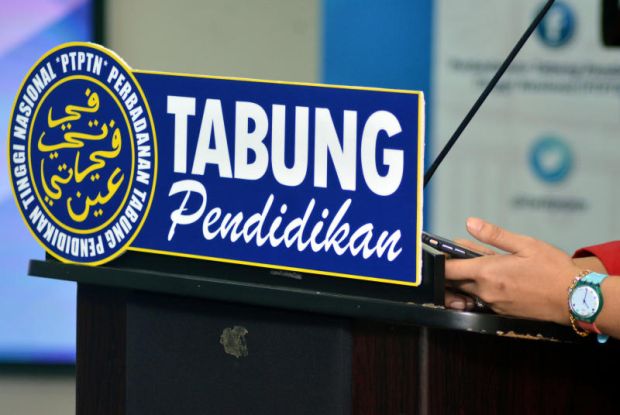Now that, as The Choice has reported, the showdown over freezing loans from the National Higher Education Fund Corporation (PTPTN) is over, it is time to sit down and take stock of the matter, and discuss the issues of funding for tertiary education seriously.
Pakatan Rakyat has decided to make this matter an election issue, which is their right; however, the manner in which they’ve gone about it has been irresponsible, including populist demagoguery for free education. That in turn led to a signature moment for Datuk Seri Anwar Ibrahim, who at a recent ceramah called on all students and former students to stop servicing their PTPTN loans on the theory that Pakatan would soon take Putrajaya, and would abolish PTPTN and the loans themselves.
What if, as looks likely, Barisan Nasional forms the next Government? Or if the budget is such that the next Government simply cannot abolish billions of ringgits in debt overnight?
Well, such are election promises.
Loan freezes and attempts to fiscally break the Government by stealth notwithstanding, there is a real debate to be had over this issue. In fact, a real debate was had when PTPTN was established. The question was whether Malaysia would embrace the model in some countries in which students took out loans for their education, or in others, in which the government funded all of the costs of tertiary education.
Tun Dr Mahathir Mohamad’s Government, led by its then Deputy Prime Minister Anwar Ibrahim, argued for a third way: To appeal to students’ responsibility and commitment to their educations by requiring them to take out loans if they could not afford the schooling outright, but to make the lending institution an arm of the government in order to minimise the harsh consequences of loan servicing for the young.
The Opposition, largely led by DAP, called for free education for all. The rhetoric then was no less overheated than now, and words like “betrayal” were tossed about liberally.
Anwar had noted then that Malaysia had a young and growing population, and the data seemed to suggest that providing free tertiary education would cause growth in the cost of education well in excess of the rate of inflation, with uncertain educational results. Put simply, the Opposition’s plan would lead to fiscal disaster. Putting part of the onus for education funding on its beneficiaries, he argued, would contain the costs.
At the time, Anwar was not — as he frequently does now — making these things up as he went. By 1997, there were reams of data and studies showing how different models produced different outcomes on educational costs and outcomes. Full public funding tended to yield lower educational outcomes and either hard choices forced down on universities in terms of faculty and infrastructure selection, or exploding costs.
A private loan system — such as that in the United States, where private loans are to some extent backed, but generally not issued, by the government — led to uneven but good educational outcomes, and wildlyexploding educational costs.
It is against this backdrop that we are currently having this debate. PTPTN has helped untold numbers of Malaysians rise to affording university and enter the workforce as productive citizens, ready to take on a competitive world.
The problem is that the PTPTN solution has not helped contain costs as much as had been hoped. Undeniably, the cost of education has risen above the rate of inflation. This raises the academic question of whether in today’s world, education is simply doomed to be an exploding cost if government is involved, as all three funding models — direct government subsidy, indirect government loan, and government-backed private loan — have demonstrated either increasing costs or severe budget problems for the universities themselves.
The practical problem is very real: The cost of loan servicing is increasing as the cost of education is rising. As Malaysia races toward developed nation status, the cost of living is also increasing.
The Government has begun to tackle this problem indirectly by expanding both, employment opportunities — the surest way to make certain that graduates can service their loans and provide for necessities — and through approaches such as the 1Malaysia clinics, which seek to lower the cost of necessities so that loan servicing is easier.
The Government has also been very straightforward with the need to further reform the system, and has already begun working on solutions. Some of these include fully privatising some loan programmes, transforming some loans into scholarships, and inviting lenders to participate in the market. Educational reform to lower the rate of academic cost increase is also on the table.
In the end, the solution to this problem will be found through careful consideration of the data and rational policy debates. Anwar and much of what now constitutes PKR once engaged in these debates. Perhaps some day soon, after GE13, they will be willing to do so again.

